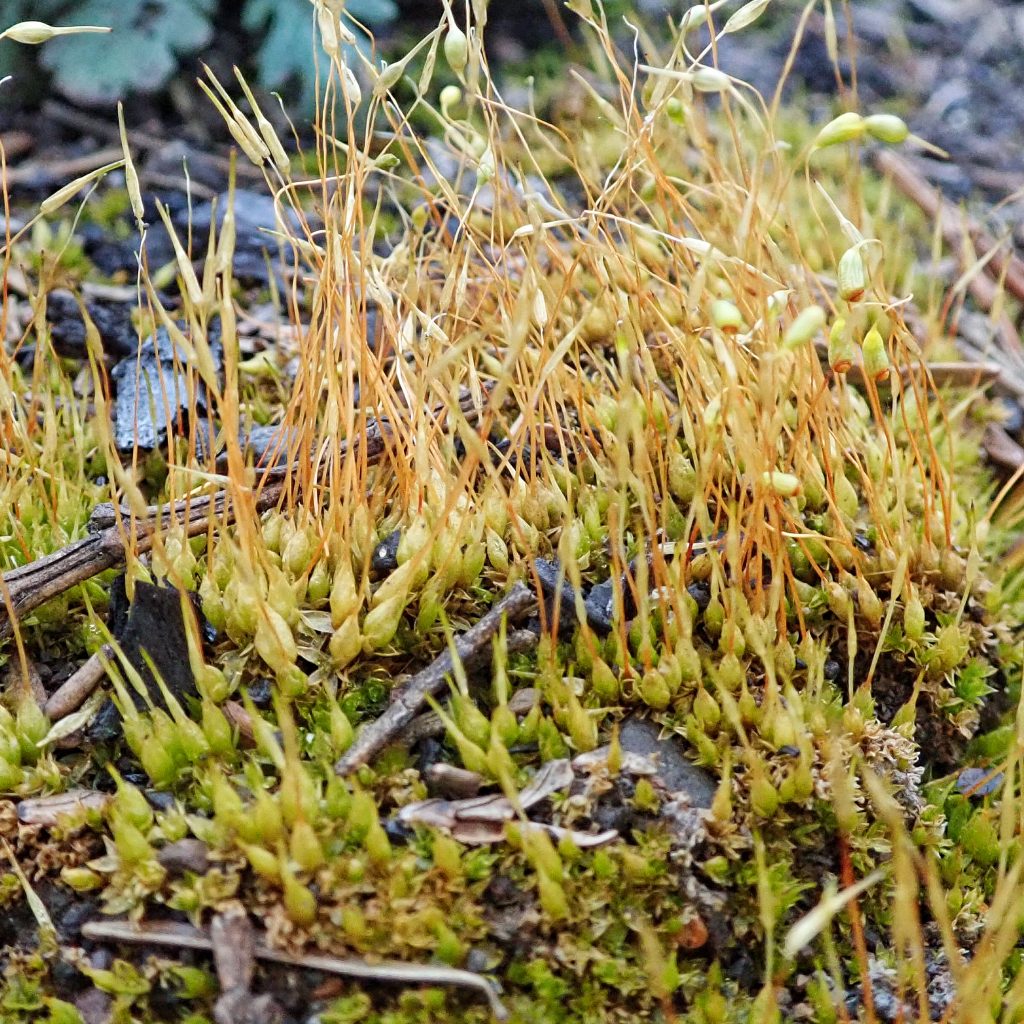
In early May, about 8 months after the initial conflagration, I made my first trip into the devastation wrought by the Holiday Farm fire. I was visiting my friends Mike and Sue, whose property along the McKenzie River was directly in the path of the blaze, which leveled every building on the place, burned everything in the understory, and charred every tree on the property, including firs, cedars, pines, ash, cottonwood, maple, alder, etc. What was a mature, mixed forest, partly second growth and partly old growth, has been reduced to snags and charcoal. The loss involved, in terms of both the ecosystem and the human elements, is heartbreaking.
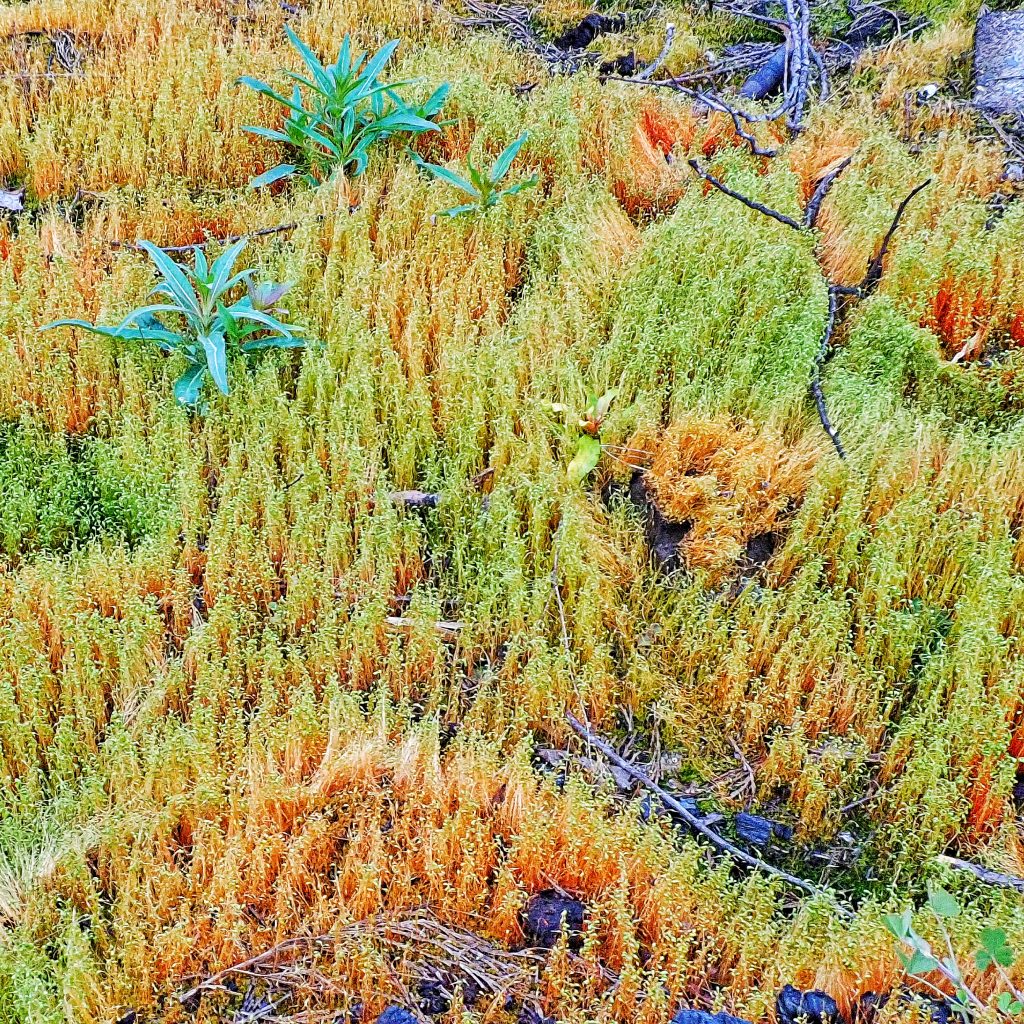
Mismanagement on the part of some governmental bureaucracies, and greed/incompetence on the part of some of the private companies tasked with cleanup, have exacerbated the problems faced by people attempting to rebuild, or return to, their homes. Nature, on the other hand, finding open space and abhorring a vacuum, has done what it always does in the face of devastation, and begun filling in the available niches.
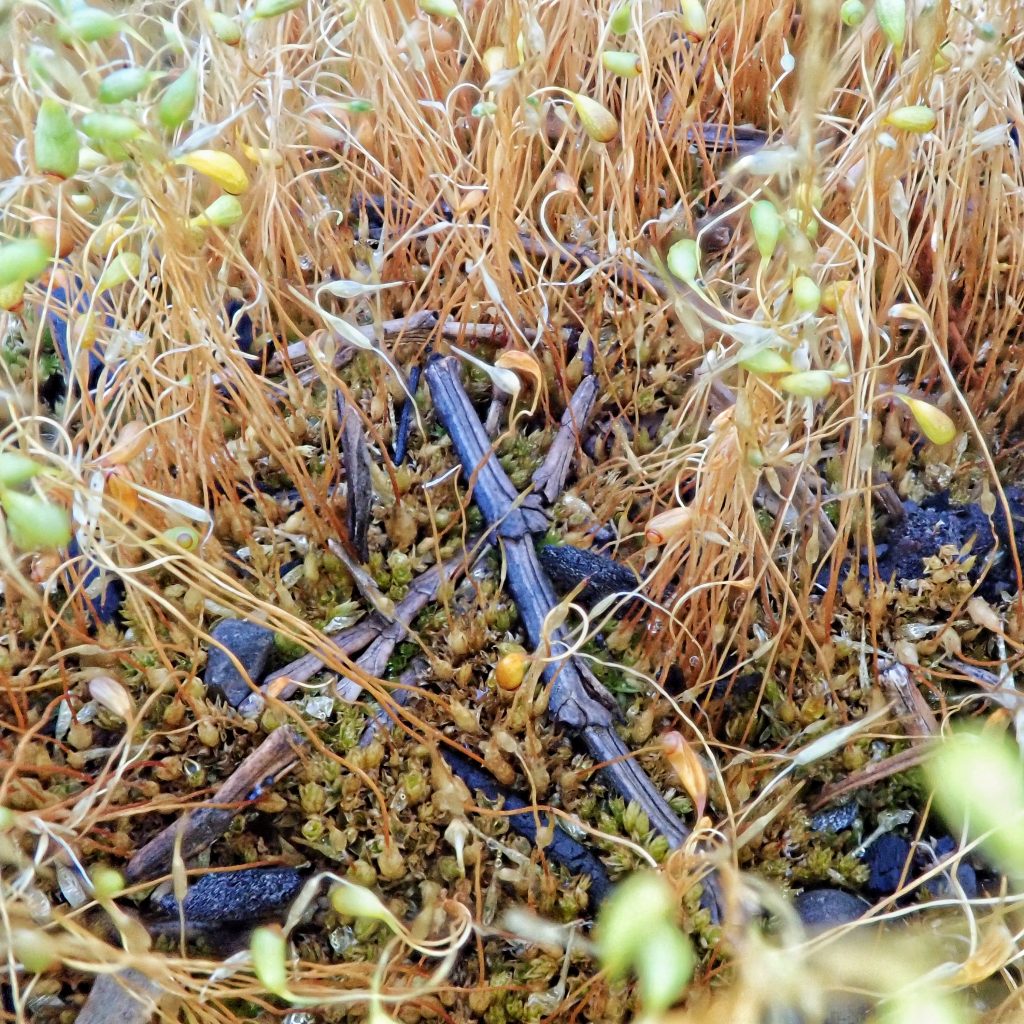
Within just a few weeks several species of orange pyrophilous (fire loving) fungi, probably in the genera Pyronema, Geopyxis, and Anthracobia, began to cover the ground and tree trunks. Mike said it was a bizarre sight to see everything go from black to orange almost overnight. These quick fruiting fungi were soon replaced by a sea of moss green as the protonema of Funaria hygrometrica (and probably Ceratodon purpureus and Bryum argenteum as well) carpeted the ground.
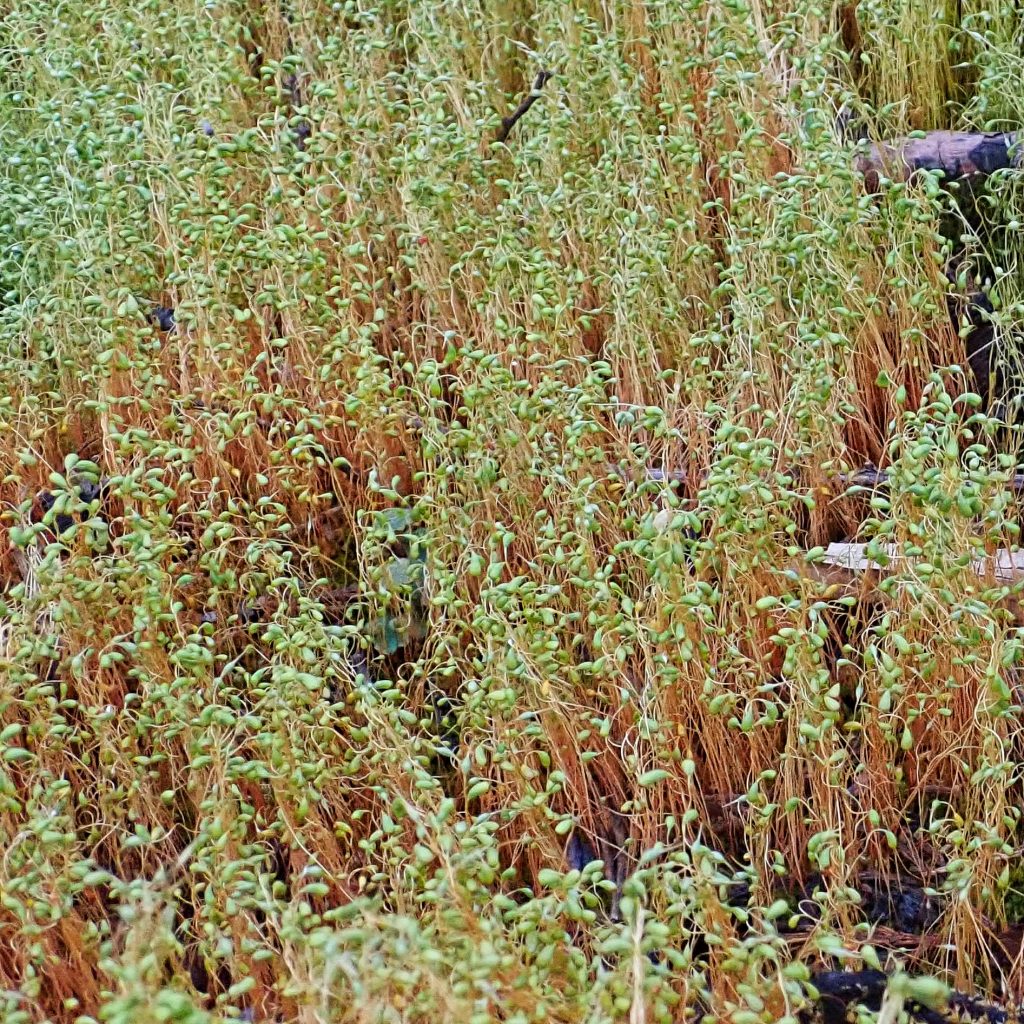
When I was down there the Funaria hygrometrica (common names for this moss include bonfire moss, common cord moss, little goldilocks, and golden maidenhair), which was overwhelmingly the most common species of moss, had passed into and through the gametophyte stage, and was producing sporophytes in astounding numbers. The colonies were so large and dense that, from a distance it almost appeared to be a lawn. And I don’t think that there was a moment, during the extensive hiking that Mike and I did through the burned areas surrounding their property, when there wasn’t some of this moss close enough to be identified by sight alone.
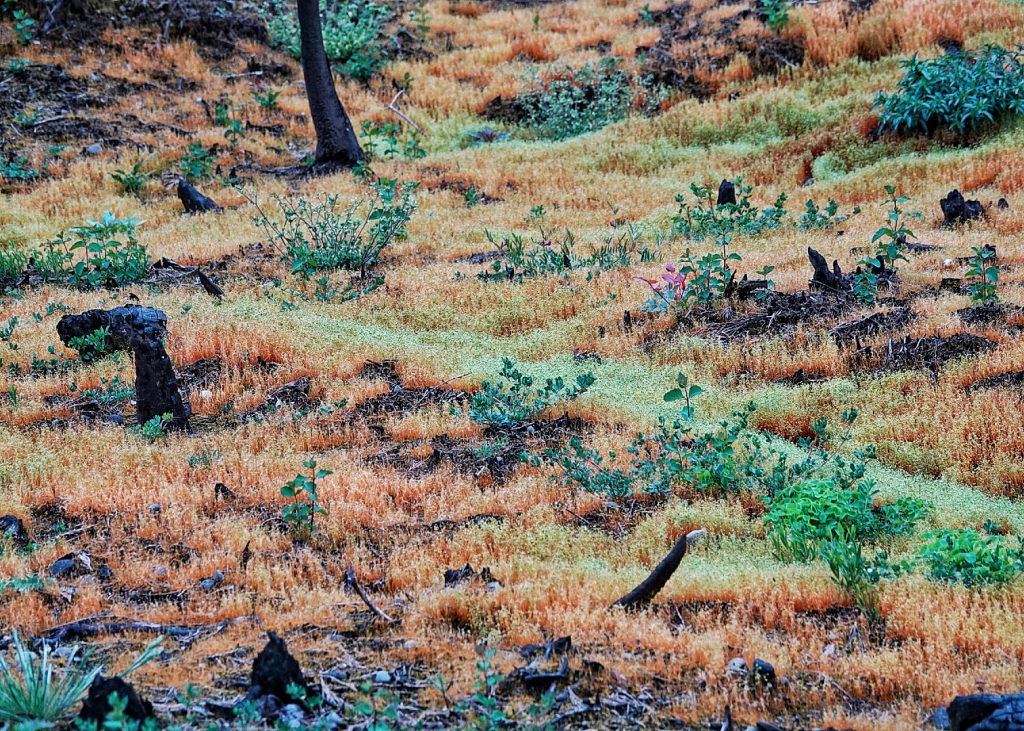
I couldn’t find a definitive answer as to how F. hygrometrica colonizes an area so quickly after a fire. It doesn’t compete well with other species, and is usually mostly crowded out after a few years. But it is an opportunistic species, and there is undoubtedly some growing somewhere near the burned area. With its massive number of sporophytes a small patch could seed a large area. Another consequence of its abundant fertility is that many of those billions of spores probably end up fallow in the ‘seedbank’ of the soil, and anything that removed the competition would probably spur them to germinate. But it turns out (according to this study) that these spores are only viable for 8 years or so, and Terry McIntosh, one of my moss mentors, suggests that they are fallout from the atmospheric ocean of spores which continually engulfs our world.
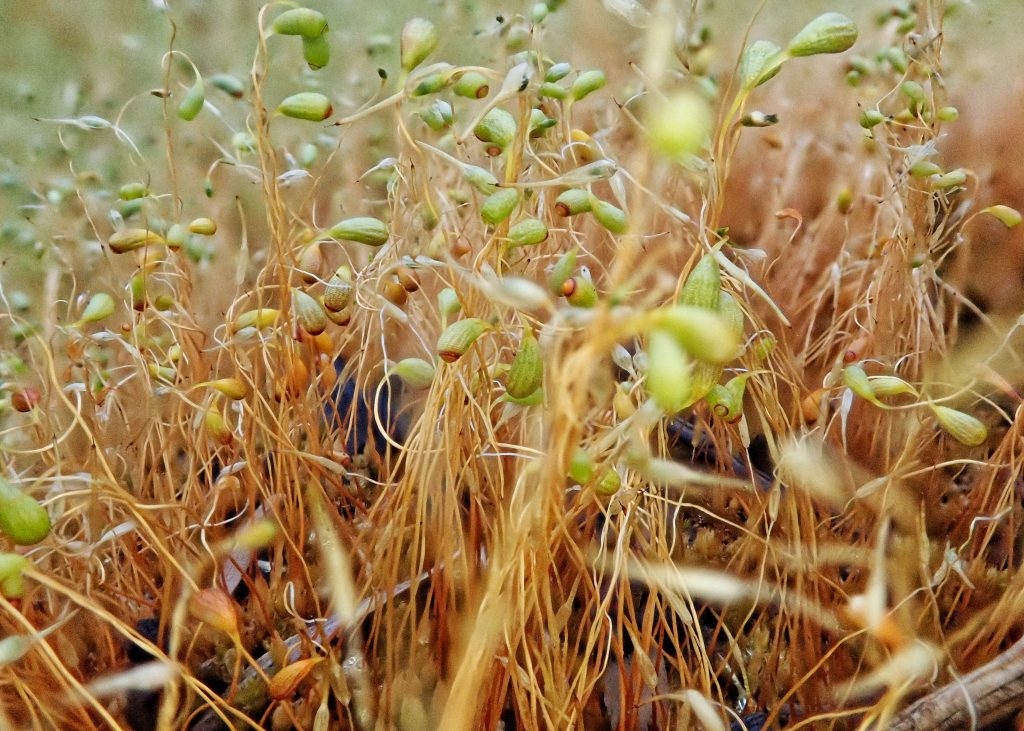
These fire adapted cryptogams, including liverworts in Marchantia, play crucial roles in the post-fire landscape. They stabilize the soil, and reduce erosion by water and wind, and they trap moisture which other plants need for seed germination. And, when they die off due to competition and other factors, they begin rebuilding the humus layer and provide nutrients for future generations of biota.
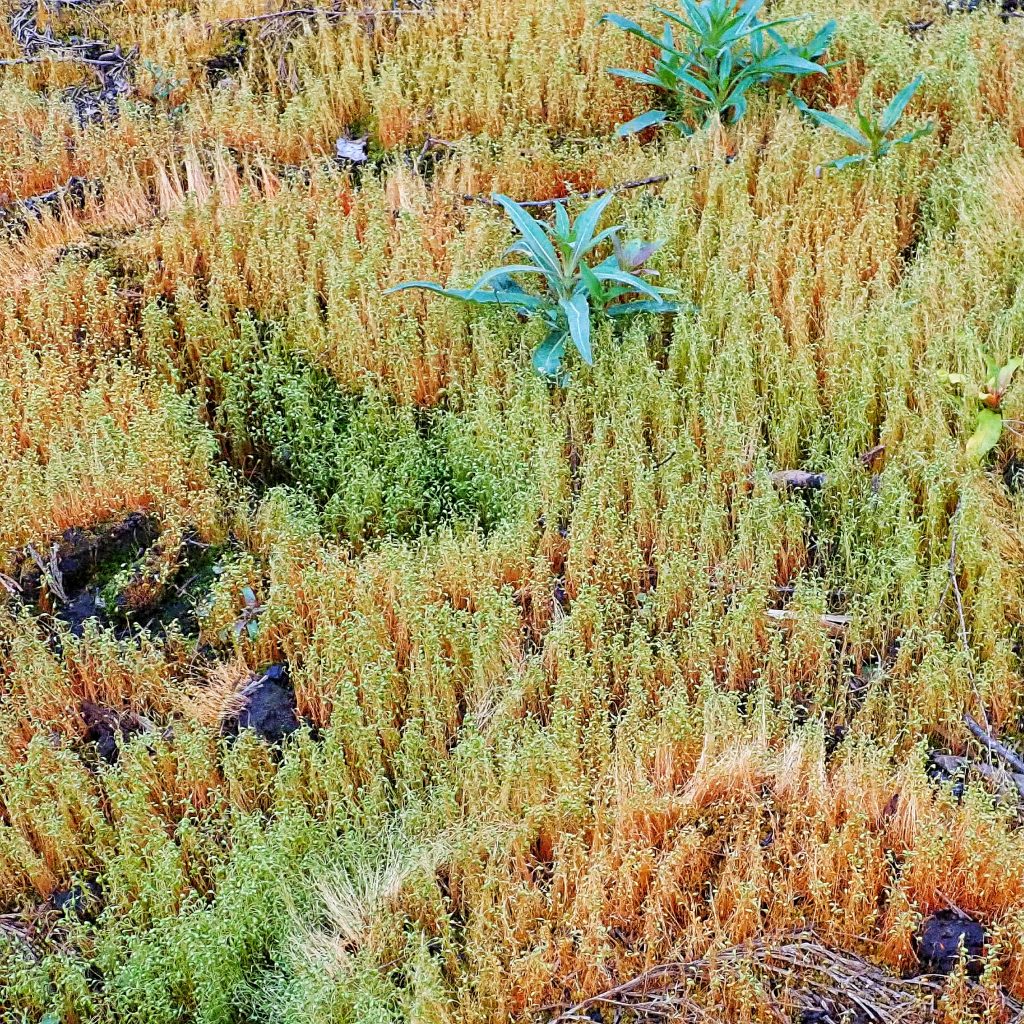
I often experienced conflicting, yet coeval, emotions while spending time at Mike and Sue’s place. There was horror at the destruction, mixed with intrigue over how much of the landscape was exposed, and joy at all of the lifeforms overcoming this disaster to assert their right to live. Despite the catastrophic loss of life in that wildfire, the ecosystem is resurrecting itself. I still have much to talk about from the weekend I spent there, and Mike and Sue have been generous enough to invite me back to continue documenting that resurrection.
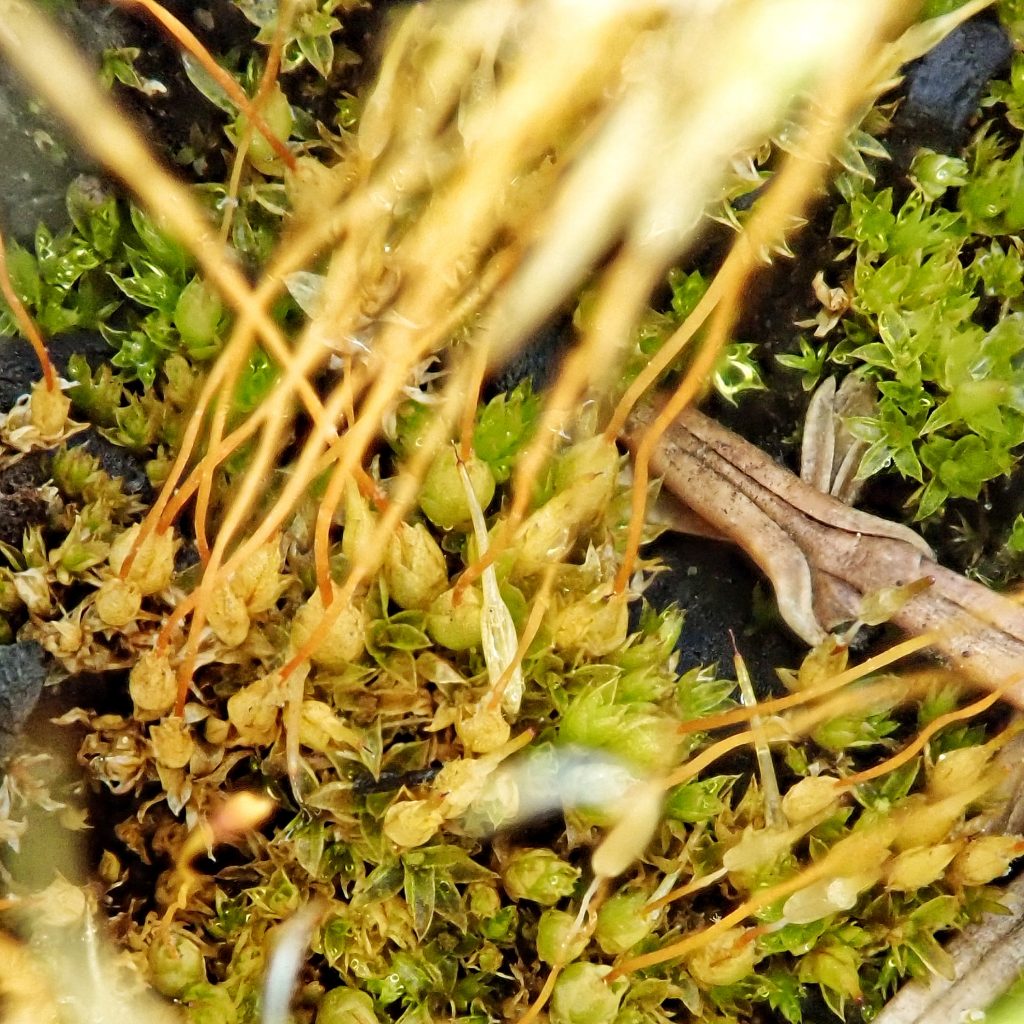
Description-Small (stem seldom over 8mm tall) moss with oval leaves clustered at the stem tip and a very long (up to 4”) sporophyte; the setae of the sporophyte is twisted and thick (for a setae) and swells and twists as it hydrates and dries; capsule has an annulus (zone of differentiated cells between capsule urn and operculum, facilitating opening of capsule) where the cap pops off, and the mouth is usually not perpendicular to the capsule.
Similar species– Other Funaria spp. in our region lack an annulus
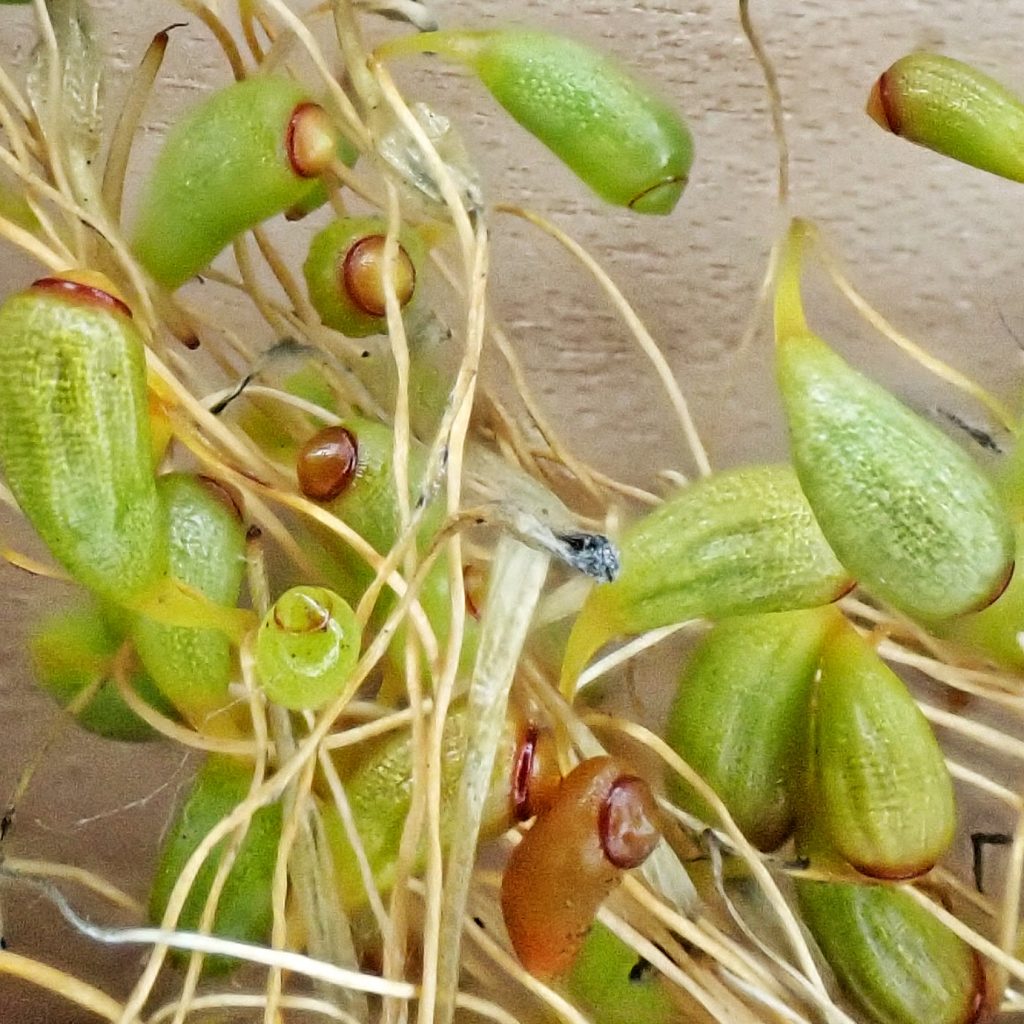
Habitat-Disturbed ground, especially by fire, moist to dry, full sun to partial shade. Since it is something of a nursery pest it is often found around plantings.
Range-Worldwide, except Antarctica; region wide in appropriate habitat.
Reproductive timing-Sporophytes begin forming in winter, and spores are dispersed in spring and summer.
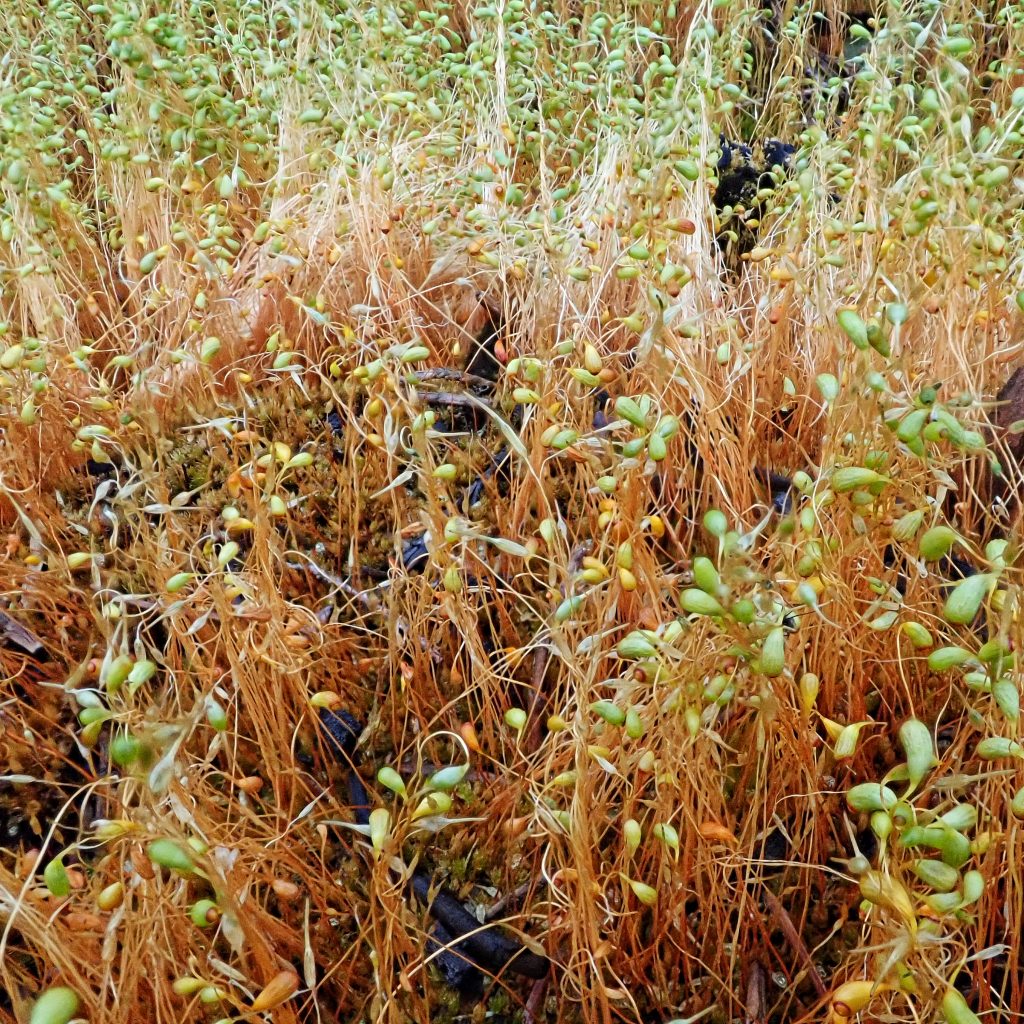
Eaten by-Slugs and snails seem fond of this moss, and many birds and small mammals consume the capsules.
Etymology of names–Funaria is from the Latin for rope, and alludes to the twisted setae of members of this genus. The specific epithet hygrometrica comes from the Greek wordsfor measuring wetness, and refers to the fact that the setae expand tremendously when they are wet.
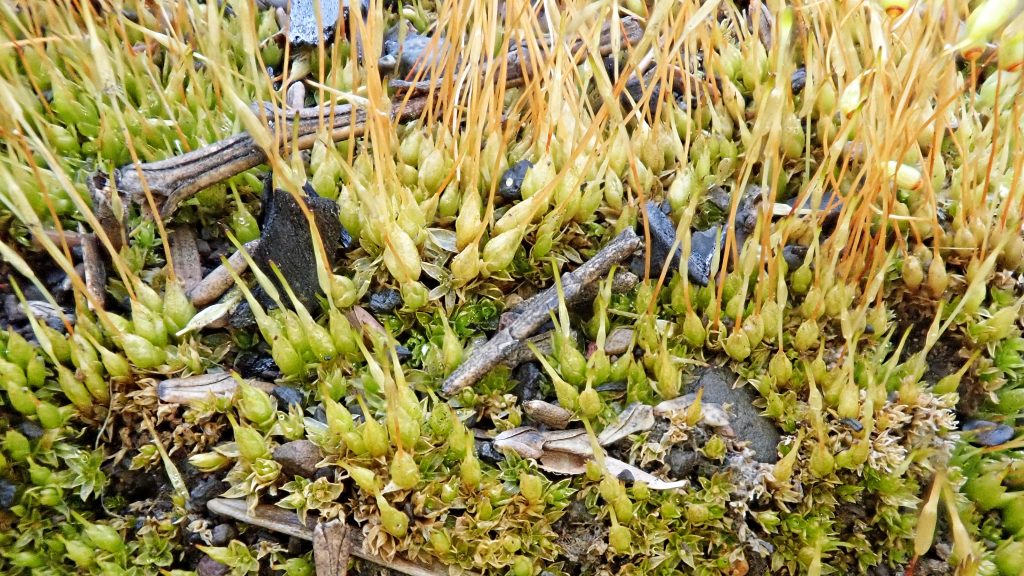
http://pza.sanbi.org/funaria-hygrometrica
http://www.efloras.org/florataxon.aspx?flora_id=1&taxon_id=200001339
https://linnet.geog.ubc.ca/Atlas/Atlas.aspx?sciname=Funaria%20hygrometrica
https://www.illinoiswildflowers.info/mosses/plants/bonfire_moss.html
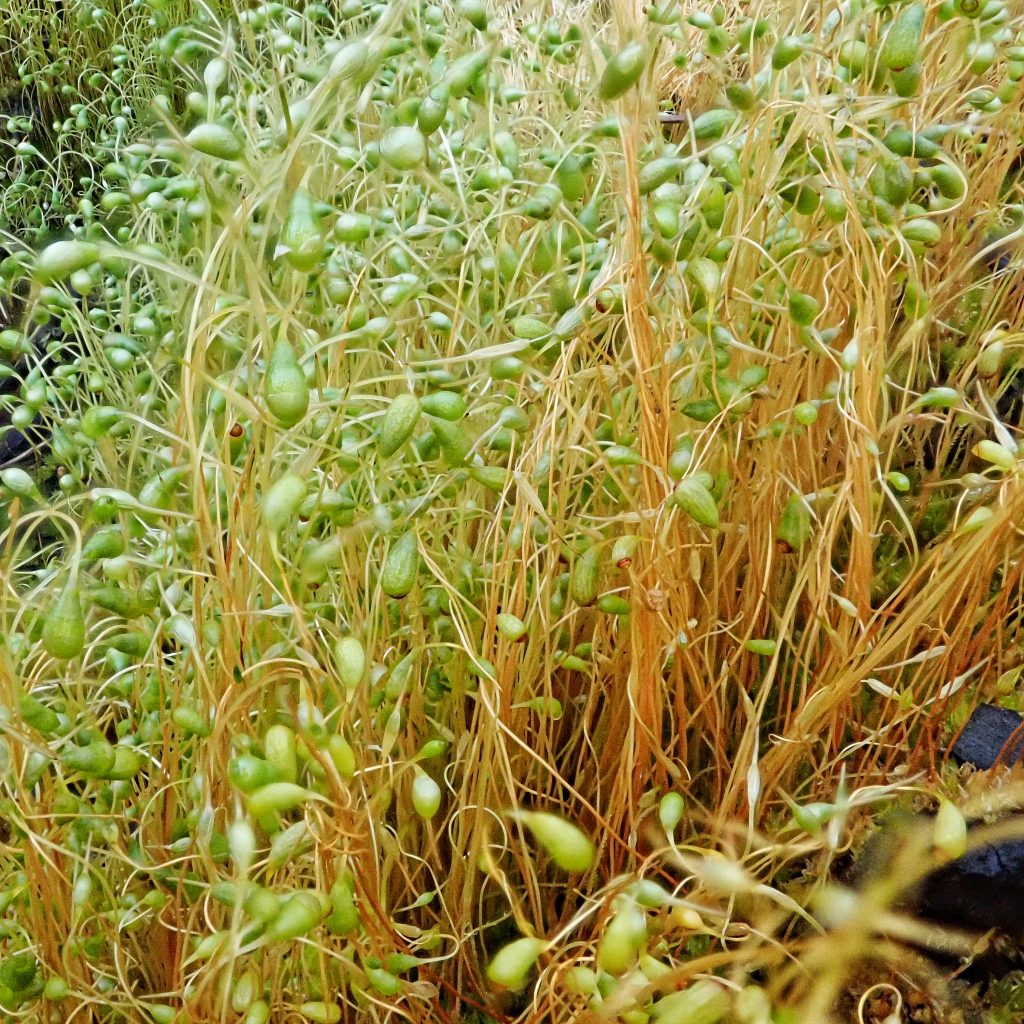
1 thought on “Funaria hygrometrica”